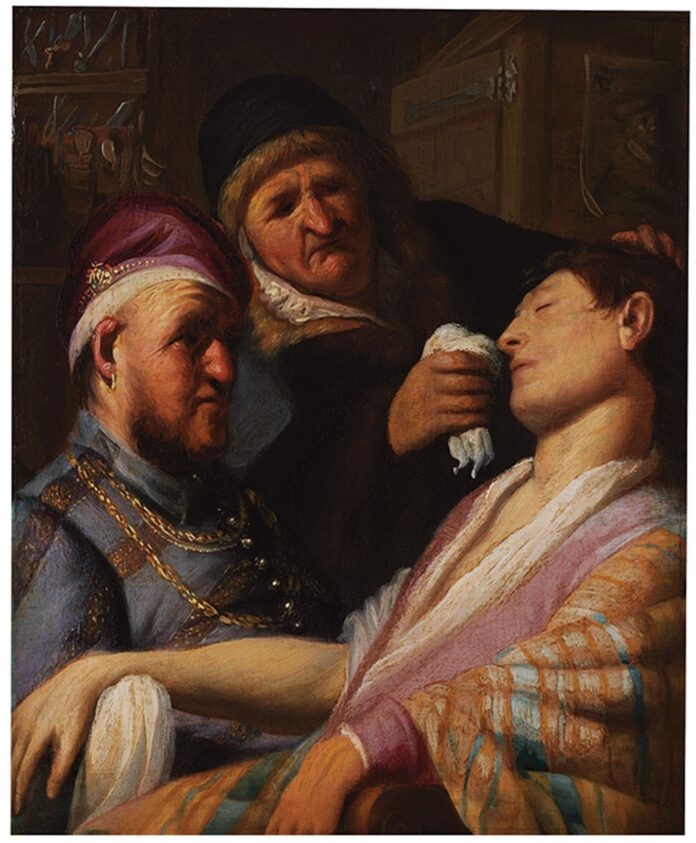
The heir to one of the original owners of Rembrandt painting claims that family members conspired to sell it without his knowledge.
In 2015, the painting, which was valued at $ 800 at a small auction in New Jersey, turned out to be the work of a teenager Rembrandt van Rijn. Now Jay Rappoport, a member of the family who submitted The Unconscious Patient (Allegory of Smell), circa 1624-25, issued his relatives and nearly everyone involved in the sale in New York State Supreme Court, claiming it was a hoax, fraud, and a conspiracy to deceive him.
The Rembrandt’s Unconscious Patient painting was sold at Nye & Co’s Bloomfield, New Jersey, Talabardon & Gautier Gallery in Paris for $ 870,000, and with commission, income topped $ 1 million. Collector Thomas Kaplan then purchased The Unconscious Patient (Allegory of Smell) for $ 4 million and reunited it in his Leiden collection with two other works from a series of five paintings by the young Rembrandt inspired by human senses.
According to the legal complaint, Jay Rappoport, the grandson of Philip Rappoport, a silk maker who acquired The Unconscious Patient before the Great Depression, says his aunt stole the work from his sick grandmother before she died. And his cousins sent it to auction without his knowledge or permission as heir.
He claims that the participants in the auction worked together as part of a conspiracy. Rappoport is also suing Thomas Kaplan and the Leiden Collection, seeking the return of the Rembrandt painting, or $ 5 million, plus legal fees and costs.
In addition to mentioning Rappoport’s family members and the auctioneer Nye & Co as defendants, the complaint lists 20 other unnamed accomplices, including the auction house employees who handled the telephone auction during the sale.
Rappoport’s lawyer Robert Sadowski says there is a conspiracy behind the scenes to launder the painting from the Landaus [cousins of Jay Rappoport], who knew it was Rembrandt, to the owners of the largest private collection of the Rembrandts. Sadowski adds that in the end, these things probably have a monetary estimated value, but there are creative ways to deal with such issues.
Thomas Kaplan and the Leiden collection are represented by John Cahill, whose only comment was that Rappoport’s complaint was groundless. Cahill urges the court to dismiss the claim about the Rembrandt painting based in part on the statute of limitations and jurisdictional grounds.
In a court document, he calls the demand to return the painting, or to receive an amount above its sale price, as a cynical, opportunistic, and belated ploy to capitalize on the recent discovery and sale of a Rembrandt painting at a high price.
In a court document, he calls the demand to return the painting, or to receive an amount above its sale price, as a cynical, opportunistic, and belated ploy to capitalize on the recent discovery and sale of a Rembrandt painting at a high price.
Cahill also claims that 20 years ago, Jay Rappoport sued director Steven Spielberg, Paramount Pictures, and a long list of film and media companies for stealing his ideas for their productions. Citing a court comment, in this case, two decades ago, Cahill wrote in his response that the plaintiff’s conspiracy claims in [Rembrandt painting] complaint are at least as far-fetched as those highlighted by the court in the Spielberg case.
























